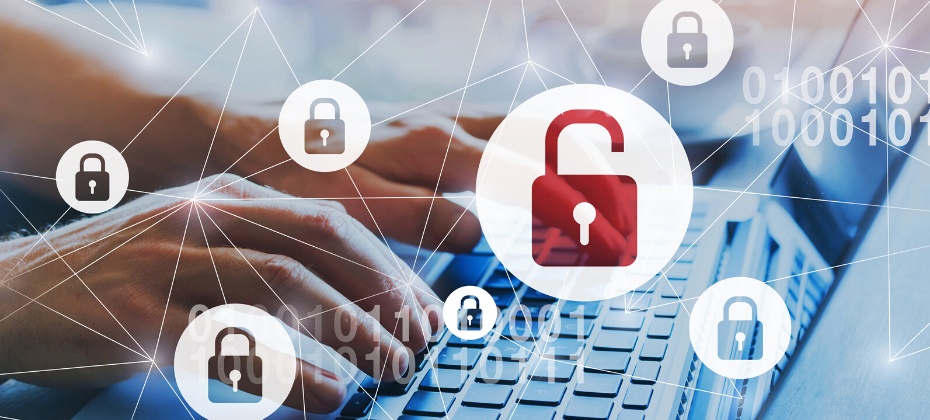All posts by Guest Contributor

For the last several years, as the global economy flourished, the opportunities created by removing friction and driving growth guided business strategies governing identity and fraud. The amount of profitable business available in a low-friction environment simply outweighed the fraud that could be mitigated with more stringent verification methods. Now that we’re facing a global crisis, it’s time to reconsider the approach that drove the economic boom that defined that last decade. Recognizing how economic changes impact fraud At the highest level, we separate fraud into two types; third party fraud and first party fraud. In simple terms, third party fraud involves the misuse of a real customer’s identity or unauthorized access to a real customer’s accounts or assets. First party fraud involves the use of an identity that the fraudster controls—whether it’s their own identity, a manipulated version of their own identity, or a synthetic identity that they have created. The important difference in this case is that the methods of finding and stopping third party fraud remain constant even in the event of an economic downturn – establish contact with the owner of the identity and verify whether the events are legitimate. Fraud tactics will evolve, and volumes increase as perpetrators also face pressure to generate income, but at the end of the day, a real person is being impersonated, and a victim exists that will confirm when fraud is taking place. Changes in first party fraud during an economic downturn are dramatically different and much more problematic. The baseline level of first party fraud using synthetic, manipulated and the perpetrator’s own identity continue, but they are augmented by real people facing desperate circumstances and existing “good” customers who over-extend while awaiting a turn-around. The problem is that there is no “victim” to confirm fraud is occurring, and the line between fraud (which implies intent) and credit default (which does not) becomes very difficult to navigate. With limited resources and pressures of their own, at some point lenders must try to distinguish deliberate theft from good customers facing bad circumstances and manage cases accordingly. The new strategy When times are good, it’s easier to build up a solid book of business with good customers. Employment rates are high, incomes are stable, and the risks are manageable. Now, we’re experiencing rapidly changing conditions, entire industries are disrupted, unemployment claims have skyrocketed and customers will need assistance and support from their lenders to help them weather the storm. This is a reciprocal relationship – it behooves those same lenders to help their customers get through to the other side. Lenders will look to limit losses and strengthen relationships. At the same time, they’ll need to reassess their existing fraud and identity strategies (among others) as every interaction with a customer takes on new meaning. Unexpected losses We’ve all been bracing for a recession for a while. But no one expected it to show up quite like it did. Consumers who have been model customers are suddenly faced with a complete shift in their daily life. A job that seemed secure may be less so, investments are less lucrative in the short term, and small business owners are feeling the pressure of a change in day-to-day commerce. All of this can lead to unexpected losses from formerly low-risk customers. As this occurs, it becomes more critical than ever to identify and help good customers facing grim circumstances and find different ways to handle those that have malicious intent. Shifting priorities When the economy was strong, many businesses were able to accept higher losses because those losses were offset by immense growth. Unfortunately, the current crisis means that some of those policies could have unforeseen consequences. For instance – the loss of the ability to differentiate between a good customer who has fallen on hard times and someone who’s been a bad actor from the start. Additionally, businesses need to revise their risk management strategies to align with shifting customer needs. The demand for emergency loans and will likely rise, while loans for new purchases like cars and homes will fall as consumers look to keep their finances secure. As the need to assist customers in distress rises and internal resources are stressed, it’s critical that companies have the right tools in place to triage and help customers who are truly in need. The good news The tools businesses like yours need to screen first party fraud already exist. In fact, you may already have the necessary framework in place thanks to an existing partnership, and a relatively simple process could prepare your business to properly screen both new and existing customers at every touchpoint. This global crisis is nowhere near over, but with the right tools, your business can protect itself and your customers from increased fraud risks and losses of all sorts – first party, stolen identities, or synthetic identities, and come out on the other side even stronger. Contact Experian for a review of your current fraud strategy to help ensure you’re prepared to face upcoming challenges. Contact us

This is the second of a three part series of blog posts highlighting key focus areas for your response to the COVID-19 health crisis: Risk, Operations, Consumer Behavior, and Reporting and Compliance. For more information and the latest resources, please visit Look Ahead 2020, Experian’s COVID-19 resource center with the latest news and tools for our business partners as well as links to consumer resources and a risk simulator. To read the introductory post, click here. Strategic Focus on Risk The last recession spurred an industry-wide systemic focus on stressed scenario forecasting. Now’s the time to evaluate the medium- to long-term impacts of the downturn response on portfolio risk measurement. The impact will be wide ranging, requiring recalibration of scorecards and underwriting processes and challenging assumptions related to fees, net interest income, losses, expenses and liquidity. There are critical inputs to understand portfolio monitoring and benchmarking by account types and segments. Higher unemployment across the country is likely. You need a thorough response to successfully navigate the emerging risks. Expanding credit line management efforts for existing accounts is critical. Proactively responding to the needs of your customers will demand a wide range of data and analytics and more frequent and active processes to take action. Current approaches and tools with increased automation may need to be reevaluated. When sudden economic shocks occur, statistical models may still rank-order effectively, while the odds-to-score relationships deteriorate. This is the time to take full advantage of explainable machine learning techniques to quickly calibrate or rebuild scorecards with refreshed data (traditional and alternative) and continue the learning cycle. As your risk management tools are evaluated and refreshed, there are many opportunities to target your servicing strategies where they can produce results. This may take the form of identifying segments exhibiting financial stress that can benefit from deferred payments, loan consolidation or refinancing. It might also involve more typical risk mitigation strategies, such as credit line reduction. There are several scenarios that may emerge over the next nine to 12 months that can offer opportunities to deepen relationships with your customers while managing long-term risk exposure. Optimizing Business Operations One of the most significant impacts to your business is the increase in transaction volumes as a result of the economic shock. We expect material increases in collections, refinancing and hardship programs. These increases are arriving at a time when many businesses have streamlined their teams in concert with periods of low delinquency and credit losses. Additional strain from call center shutdowns and limited staffing can easily overwhelm operations and cause business continuity plans to breakdown. More than ever, the use of digital channels and self-servicing technology are no longer nice-to-haves. Customers expect online access, and efficiency demands automation, including virtual assistants. As more volume migrates to these channels, it’s critical to have the right customer experience and fraud risk controls deployed through flexible, cloud-based systems. Learn More

This is the introduction to a series of blog posts highlighting key focus areas for your response to the COVID-19 health crisis: Risk, Operations, Consumer Behavior, and Reporting and Compliance. For more information and the latest resources, please visit Look Ahead 2020, Experian's COVID-19 resource center with the latest news and tools for our business partners as well as links to consumer resources and a risk simulator. Responding to COVID-19 The response to COVID-19 is rolling out across the global financial system and here in North America. Together, we’re adapting to working remotely and adjusting to our “new normal.” It seems the long forecasted economic recession is finally and abruptly on our doorstep. Recession planning has been a focus for many organizations, and it’s now time to act on these contingency plans and respond to the downturn. The immediate effects and those that quickly follow the pandemic will widely impact the economy, affecting businesses of all sizes, employment and consumer confidence. We learned from the housing crisis and Great Recession how to identify and adapt to emerging risks. We can apply those skills while rebuilding the economy and focusing on the consumer. How should you respond? What strategies should you deploy? How can you balance emerging risks, changing consumer expectations and regulatory impacts? First, let's draw upon the best knowledge we gained from the last recession and apply those learnings. Second, we need to understand the current environment including the impact of major changes in technology and consumer behavior over the last few years. This approach will allow us to identify key themes to help build-out strategies to focus resources, respond successfully and deliver for stakeholders. Anticipate the pervasive and highly impactful market dynamics and trends The impact of this downturn on the consumer, on businesses and on financial institutions will be very different to that of the Great Recession. There will be a complete loss of income for many workers and small businesses. In a survey conducted by the Center for Financial Services Innovation (CFSI), more than 112 million Americans said that they don’t have enough savings to cover three months of living expenses*. These volatile market conditions and consumer insecurity will cause changes to your business models. You must prepare to manage increased fraud attacks, continue to push toward digital banking and understand regulatory changes. Learn More *U.S. Financial Health Pulse, 2018 Baseline Survey Results. https://s3.amazonaws.com/cfsi-innovation-files-2018/ wp-content/uploads/2018/11/20213012/Pulse-2018- Baseline-Survey-Results-11-16.18.pdf

Originally posted by Experian Global News blog At Experian, we have an unwavering commitment to helping consumers and clients manage through this unprecedented period. We are actively working with consumers, lenders, lawmakers and regulators to help mitigate the potential impact on credit scores during times of financial hardship. In response to the urgent and rapid changes associated with COVID-19, we are accelerating and enhancing our financial education programming to help consumers maintain good credit and gain access to the financial services they need. This is in addition to processes and tools the industry has in place to help lenders accommodate situations where consumers are affected by circumstances beyond their control. These processes will be extended to those experiencing financial hardship as a result of COVID-19. As the Consumer’s Credit Bureau, our commitment at Experian is to inform, guide and protect our consumers and customers during uncertain times. With expected delays in bill payments, unprecedented layoffs, hiring freezes and related hardships, we are here to help consumers in understanding how the credit reporting system and personal finance overall will move forward in this landscape. One way we’re doing this is inviting everyone to join our special eight-week series of #CreditChat conversations surrounding COVID-19 on Wednesdays at 3 p.m. ET on Twitter. Our weekly #CreditChat program started in 2012 to help the community learn about credit and important personal finance topics (e.g. saving money, paying down debt, improving credit scores). The next several #CreditChats will be dedicated to discussing ways to manage finances and credit during the pandemic. Topics of these #CreditChats will include methods and strategies for bill repayment, paying down debt, emergency financial assistance and preparing for retirement during COVID-19. “As the consumer’s credit bureau, we are committed to working with consumers, lenders and the financial community during and following the impacts of COVID-19,” says Craig Boundy, Chief Executive Officer of Experian North America. “As part of our nation’s new reality, we are planning for options to help mitigate the potential impact on credit scores due to financial hardships seen nationwide. Our #CreditChat series and supporting resources serve as one of several informational touchpoints with consumers moving forward.” Being fully committed to helping consumers and lenders during this unprecedented period, we’ve created a dedicated blog page, “COVID-19 and Your Credit Report,” with ongoing and updated information on how COVID-19 may impact consumers’ creditworthiness and – ultimately – what people should do to preserve it. The blog will be updated with relevant news as we announce new solutions and tactics. Additionally, our “Ask Experian” blog invites consumers to explore immediate and evolving resources on our COVID-19 Updates page. In addition to this guidance, and with consumer confidence in the economy expected to decline, we will be listening closely to the expert voices in our Consumer Council, a group of leaders from organizations committed to helping consumers on their financial journey. We established a Consumer Council in 2009 to strengthen our relationships and to initiate a dialogue among Experian and consumer advocacy groups, industry experts, academics and other key stakeholders. This is in addition to ongoing collaboration with our regulators. Additionally, our Experian Education Ambassador program enables hundreds of employee volunteers to serve as ambassadors sharing helpful information with consumers, community groups and others. The goal is to help the communities we serve across North America, providing the knowledge consumers need to better manage their credit, protect themselves from fraud and identity theft and lead more successful, financially healthy lives. COVID-19 has impacted all industries and individuals from all walks of life. We want our community to know we are right there with you. Learn more about our weekly #CreditChat and upcoming schedule here. Learn more

In uncertain times, we need to find ways to adapt to our situation. We want to help you manage through this unprecedented period.

In the past 10 years, consumers begin purchasing convertibles as early as March.

Experian’s 7th Annual Data Breach Preparedness Study is available now, and its findings show organizations struggling in a few areas that are sure to see data breach activity increase this year. New to report this year: we surveyed IT and IT security, compliance, and privacy professionals in both the U.S. and the EMEA to compare the regional differences amongst organizations and their outlook around data breach preparedness. A few themes that stuck out in the study this year were: Spear Phishing and Ransomware 69% of respondents had one or more spear phishing attacks in 2019 Since 2017, respondents who say their organizations are very confident or confident in their ability to deal with spear phishing attacks has declined from 31% to 23% 36% of respondents say their organizations had a ransomware attack last year with only 20% feeling confident in their ability to deal with it The average ransom was $6,128, and 68% of respondents say the ransom was paid Confidence in Data Breach Response Plans From a reputation standpoint, only 23% of respondents say their organization is confident in its ability to minimize the financial and reputational consequences of a material data breach Only 38% of respondents believe they are effective at doing what needs to be done following a data breach to prevent the loss of customers’ and business partners’ trust and confidence Global Data Breaches Only 34% of respondents say they are confident their organizations are able to respond to global breaches, as breaches increasingly become international in scope Read the full results of Experian's 7th Annual Data Breach Preparedness Study and see how you compare to other organizations when it comes to data breach preparedness. Download the full study

Security. Convenience. Personalization. Finding the balance between these three priorities is key to creating a safe and low-friction customer experience. We surveyed more than 6,500 consumers and 650 businesses worldwide about these priorities for our 2020 Global Identity and Fraud Report: Most business are focusing on personalization, specifically in relation to upselling and cross-selling. This is frustrating customers who are looking for increases in both security and convenience. It’s possible to have all three. Read Full Report

If you’ve been on the dating scene in the last few years, you’re probably familiar with ghosting. For those of you who aren’t, I’ll save you the trip to Urban Dictionary. “Ghosting” is when the person you’re dating disappears. No calls. No texts. No DMs. They just vanish, never to be heard from again. As troublesome as this can be, there’s a much more nefarious type of ghosting to be wary of – credit ghosting. Wait, what’s credit ghosting? Credit ghosting refers to the theft of a deceased person’s identity. According to the IRS, 2.5 million deceased identities are stolen each year. The theft often occurs shortly after someone dies, before the death is widely reported to the necessary agencies and businesses. This is because it can take months after a person dies before the Social Security Administration (SSA) and IRS receive, share, or register death records. Additionally, credit ghosting thefts can go unnoticed for months or even years if the family of the deceased does not check their credit report for activity after death. Opportunistic fraudsters check obituaries and other publicly available death records for information on the deceased. Obituaries often include a person’s birthday, address or hometown, parents’ names, occupation, and other information regularly used in identity verification. With this information fraudsters can use the deceased person’s identity and take advantage of their credit rating rather than taking the time to build it up as they would have to with other types of fraud. Criminals will apply for credit cards, loans, lines of credit, or even sign up for a cell phone plan and rack up charges before disappearing. Where did this type of identity theft come from? Credit ghosting is the result of a few issues. One traces back to a discrepancy noted by the Social Security’s inspector general. In an audit, they found that 6.5 million Social Security numbers for people born before June 16, 1901, did not have a date of death on record in the administration’s Numident (numerical identification) system – an electronic database containing Social Security number records assigned to each citizen since 1936. Without a date of death properly noted in the database, government agencies and other entities inquiring won’t necessarily know an individual is deceased, making it possible for criminals to implement credit ghosting schemes. Additionally, unreported deaths leave further holes in the system, leading to opportunity for fraudsters. When financial institutions run checks on the identity information supplied by a fraudster, it can seem legitimate. If the deceased’s credit is in good standing, the fraudster now appears to be a good customer—much like a synthetic identity—but now with the added twist that all of the information is from the same person instead of stitched together from multiple sources. It can take months before the financial institution discovers that the account has been compromised, giving fraudsters ample time to bust out and make off with the funds they’ve stolen. How can you defend against credit ghosting? Luckily, unlike your dating pipeline, there are ways to guard against ghosting in your business’ pipeline. Frontline Defense: Start by educating your customers. It’s never pleasant to consider your own passing or that of a loved one, but it’s imperative to have a plan in place for both the short and long term. Remind your customers that they should contact lenders and other financial institutions in the event of a death and continue monitoring those accounts into the future. Relatives of the deceased don’t tend to check credit reports after an estate has been settled. If the proper steps aren’t taken by the family to notify the appropriate creditors of the death, the deceased flag may not be added to their credit report before the estate is closed, leaving the deceased’s information vulnerable to fraud. By offering your customers assistance and steps to take, you can help ensure that they’re not dealing with the fallout of credit ghosting—like dealing with calls from creditors following up after the fraudster’s bust-out—on top of grieving. Backend Defense: Ensure you have the correct tools in place to spot credit ghosts when they try to enter your pipeline. Experian’s Fraud Shield includes high risk indicators and provides a deceased indicator flag so you can easily weed them out. Additionally, you can track other risk indicators like previous uses of a particular Social Security number and identify potential credit-boosting schemes. Speak to an Experian associate today about how you can increase your defenses against credit ghosting. Let's talk

Electric vehicles have 2.08 percent of total VIO share through September 30, 2019

It’s December, and if you’re like most credit union leaders, your strategic plan is distributed, and the 2020 budget is approved. Before you know it, you and your team will be off and running to pursue the New Year’s goals. Another thing most of us have in common is a strategic membership growth priority. New members are needed to help us take loan and deposit growth to the next level. Specifically, who are you looking for? It’s surprising how many credit union leaders have a difficult time clarifying their ideal member(s). They usually come up short after they have called out younger borrowers, active checking account users, prime credit, middle income, homeowners, etc. The reality is in today’s competitive market, these general audiences are not definitive enough. Many then go to market with a limited universe that is too generic to be highly effective. Savvy marketers have a much deeper understanding of who they are reaching and why. First, they have clearly defined the ideal member i.e. product profitability, relationship profitability, referrals, how they access the credit union, etc. Second, they use data, analytics and demographic segmenting to refine their search further to reveal the ideal member. They leverage information to understand what drives the potential members decision making. They understand that every potential member does not live the same type of life. They segment markets into groups to understand their shared values and life experiences. These segments include geographic, demographic, financial behavior, and motivation that includes psychographics and social values. Thus, armed with this information, they align the consumer’s needs with the credit union’s products, purpose and strategic goals. This clarity allows them to invest their marketing dollars for the best possible result. Most credit unions would identify “younger borrowers” as a desired member, so we’ve laid out two examples of just how different this member can look. Ambitious Singles – is a demographic segment comprised of younger cutting-edge singles living in mid-scale, metro areas that balance work and leisure lifestyles. Annual Median income $75k - $100K Highly educated First time home buyers Professionals, upwardly mobile Channel preferences for engaging with brands (and their offers) is while watching or streaming TV, listening to their favorite radio apps or while browsing the web on their phones. They are also quite email receptive (but subject lines must be compelling) Families Matter Most – This segment is comprised of young middle-class families in scenic suburbs, leading family focused lives. Annual Median income $75K - $99K Have children 4-6 yrs. old Educated Homeowners Child-related purchases Credit revolver and auto borrowers (larger vehicles) Go online for banking, telecommuting and shopping Both segments represent younger borrowers with similar incomes, but they have different loan needs, lifestyle priorities and preferences for engaging with a marketing offer. These are just two examples of the segmentation data that is available from Experian. The segmentation solution provides a framework to help credit unions identify the optimal customer investment strategy for each member segment. This framework helps the credit union optimize their marketing between differentiating segments. For some segments the investment may be directed toward finding the ideal member. Others may be made to find depositors. While many credit unions don’t have infinite marketing budgets or analytical resources, segmentation help marketers more efficiently and effectively pursue the best member or develop member personas to better resonate with existing members. The feedback we have heard from credit union leaders is that the solution is the best segmentation tool they have seen. Learn more about it here. What your team is up against Today, credit unions face national competitors that are using state-of-the-art data analytics, first-rate technology and in-depth market segmentation to promote very attractive offers to win new members, deposits, checking accounts and loans. Their offers have a look, feel, message and offer that are relevant to the person receiving the offer. Here are a few recent “offer” examples that we have heard of that should give you pause: Fintech companies, like the Lending Club offering auto loan refinances (the offer provides an estimate of refinance interest savings). The ad we saw had an estimated monthly payment of $80. PayPal Cashback Mastercard® – with a $300 early use cash bonus and 3% cash back on purchases. High limit personal loans that take minutes to apply and to be funded. Banks acting alone or in partnership with a fintech to offer online checking accounts with new account opening bonuses ranging from $300-$600. and of course, Quicken® Mortgage promoting low rates and fast and seamless origination. These are just a few recent examples from thousands of offers that are reaching your ideal member. Besides offering great rates, cash back, low fees and seamless service – these offers are guided by robust data analytics and consumer segmentation to reach and engage a well-defined, ideal consumer. Why it matters The 2020 race is on. Hopefully your team has clarity of the member(s) they want to reach, access to robust data analytics, in depth consumer insights, reliable credit resources and marketing tools they will need to compete in the toughest financial market any of us have likely ever seen. If you’re afraid that you can’t afford the right tools when it comes to marketing, consider what the dealer fee is for purchasing an indirect auto loan. What if the 2% or more fee was reallocated to finding organic loan growth with consumers you’re more likely to build a relationship with? Or consider the cost of consistently marketing to the wrong consumer segments with the wrong message, at the wrong time and in the wrong channels. What if you could increase your market engagement rate from 5% to 10%? Perhaps the best strategic question is can you afford NOT to have the best tools that support future membership growth? If you don’t win your ideal member, somebody else will. Learn More About Scott Butterfield, CUDE, CCUE Principal, Your Credit Union Partner Scott Butterfield is a trusted advisor to the leaders of more than 170 credit unions located throughout the United States. A respected veteran of the CU Movement, he understands the challenges and opportunities facing credit unions today. Scott believes that credit unions matter, and that consumers and small businesses need credit unions to now more than ever.

Sometimes, the best offense is a good defense. That’s certainly true when it comes to detecting synthetic identities, which by their very nature become harder to find the longer they’ve been around. To launch an offense against synthetic identity fraud, you need to defend yourself from it at the top of your new customer funnel. Once fraudsters embed their fake identity into your portfolio, they become nearly impossible to detect. The Challenge Synthetic identity fraud is the fastest-growing type of financial crime in the United States. The cost to businesses is hard to determine because it’s not always caught or reported, but the amounts are staggering. According to the Aite Group, it was estimated to total at least $820 million in 2017 and grow to $1.2 billion by 2020. This type of theft begins when individual thieves and large-scale crime rings use a combination of compromised personal information—like unused social security numbers—and fabricated data to stitch together increasingly sophisticated personas. These well-crafted synthetic identities are hard to differentiate from the real deal. They often pass Know Your Customer, Customer Identification Program and other onboarding checks both in person and online. This puts the burden on you to develop new defense strategies or pay the price. Additionally, increasing pressure to grow deposits and expand loan portfolios may coincide with the relaxation of new customer criteria, allowing even more fraudsters to slip through the cracks. Because fraudsters nurture their fake identities by making payments on time and don’t exhibit other risk factors as their credit limits increase, detecting synthetic identities becomes nearly impossible, as does defending against them. How This Impacts Your Bottom Line Synthetic identity theft is sometimes viewed as a victimless crime, since no single individual has their entire identity compromised. But it’s not victimless. When undetected fraudsters finally max out their credit lines before vanishing, the financial institution is usually stuck footing the bill. These same fraudsters know that many financial institutions will automatically settle fraud claims below a specific threshold. They capitalize on this by disputing transactions just below it, keeping the goods or services they purchased without paying. Fraudsters can double-dip on a single identity bust-out by claiming identity theft to have charges removed or by using fake checks to pay off balances before maxing out the credit again and defaulting. The cost of not detecting synthetic identities doesn’t stop at the initial loss. It flows outward like ripples, including: Damage to your reputation as a trusted organization Fines for noncompliance with Know Your Customer Account opening and maintenance costs that are not recouped as they would be with a legitimate customer Mistakenly classifying fraudsters as bad debt write offs Monetary loss from fraudsters’ unpaid balances Rising collections costs as you try to track down people who don’t exist Less advantageous rates for customers in the future as your margins grow thinner These losses add up, continuing to impact your bottom line over and over again. Defensive Strategies So what can you do? Tools like eCBSV that will assist with detecting synthetic identities are coming but they’re not here yet. And once they’re in place, they won’t be an instant fix. Implementing an overly cautious fraud detection strategy on your own will cause a high number of false positives, meaning you miss out on revenue from genuine customers. Your best defense requires finding a partner to help you implement a multi-layered fraud detection strategy throughout the customer lifecycle. Detecting synthetic identities entails looking at more than a single factor (like length of credit history). You need to aggregate multiple data sets and connect multiple customer characteristics to effectively defend against synthetic identity fraud. Experian’s synthetic identity prevention tools include Synthetic Identity High Risk Score to incorporate the history and past relationships between individuals to detect anomalies. Additionally, our digital device intelligence tools perform link analyses to connect identities that seem otherwise separate. We help our partners pinpoint false identities not associated with an actual person and decrease charge offs, protecting your bottom line and helping you let good customers in while keeping false personas out. Find out how to get your synthetic identity defense in place today.

As the holiday shopping season kicks off, it’s prime time for fraudsters to prey on consumers who are racking up rewards points as they spend. Find out how fraud trends in loyalty and rewards programs can impact your business: Are you ready to prevent fraud this holiday season? Get started today

Article written by Melanie Smith, Senior Copywriter, Experian Clarity Services, Inc. It’s been almost a decade since the Great Recession in the United States ended, but consumers continue to feel its effects. During the recession, millions of Americans lost their jobs, retirement savings decreased, real estate reduced in value and credit scores plummeted. Consumers that found themselves impacted by the financial crisis often turned to alternative financial services (AFS). Since the end of the recession, customer loyalty and retention has been a focus for lenders, given that there are more options than ever before for AFS borrowers. To determine what this looks like in the current climate, we examined today’s non-prime consumers, what their traditional scores look like and if they are migrating to traditional lending. What are alternative financial services (AFS)? Alternative financial services (AFS) is a term often used to describe the array of financial services offered by providers that operate outside of traditional financial institutions. In contrast to traditional banks and credit unions, alternative service providers often make it easier for consumers to apply and qualify for lines of credit but may charge higher interest rates and fees. More than 50% of new online AFS borrowers were first seen in 2018 To determine customer loyalty and fluidity, we looked extensively at the borrowing behavior of AFS consumers in the online marketplace. We found half of all online borrowers were new to the space as of 2018, which could be happening for a few different reasons. Over the last five years, there has been a growing preference to the online space over storefront. For example, in our trends report from 2018, we found that 17% of new online customers migrated from the storefront single pay channel in 2017, with more than one-third of these borrowers from 2013 and 2014 moving to online overall. There was also an increase in AFS utilization by all generations in 2018. Additionally, customers who used AFS in previous years are now moving towards traditional credit sources. 2017 AFS borrowers are migrating to traditional credit As we examined the borrowing behavior of AFS consumers in relation to customer loyalty, we found less than half of consumers who used AFS in 2017 borrowed from an AFS lender again in 2018. Looking into this further, about 35% applied for a loan but did not move forward with securing the loan and nearly 24% had no AFS activity in 2018. We furthered our research to determine why these consumers dropped off. After analyzing the national credit database to see if any of these consumers were borrowing in the traditional credit space, we found that 34% of 2017 borrowers who had no AFS activity in 2018 used traditional credit services, meaning 7% of 2017 borrowers migrated to traditional lending in 2018. Traditional credit scores of non-prime borrowers are growing After discovering that 7% of 2017 online borrowers used traditional credit services in 2018 instead of AFS, we wanted to find out if there had also been an improvement in their credit scores. Historically, if someone is considered non-prime, they don’t have the same access to traditional credit services as their prime counterparts. A traditional credit score for non-prime consumers is less than 600. Using the VantageScore® credit score, we examined the credit scores of consumers who used and did not use AFS in 2018. We found about 23% of consumers who switched to traditional lending had a near-prime credit score, while only 8% of those who continued in the AFS space were classified as near-prime. Close to 10% of consumers who switched to traditional lending in 2018 were classified in the prime category. Considering it takes much longer to improve a traditional credit rating, it’s likely that some of these borrowers may have been directly impacted by the recession and improved their scores enough to utilize traditional credit sources again. Key takeaways AFS remains a viable option for consumers who do not use traditional credit or have a credit score that doesn’t allow them to utilize traditional credit services. New AFS borrowers continue to appear even though some borrowers from previous years have improved their credit scores enough to migrate to traditional credit services. Customers who are considered non-prime still use AFS, as well as some near-prime and prime customers, which indicates customer loyalty and retention in this space. For more information about customer loyalty and other recently identified trends, download our recent reports. State of Alternative Data 2019 Lending Report

Time – it’s the only resource we can’t get more of, which is why we tend to obsess over saving it. Despite this obsession, it can be hard for us to identify time-wasting activities. From morning habits to credit decisioning, processes and routines that seem, well, routine, can get in the way of maximizing how we use our time. Identifying the Problem Every morning, I used to turn on my coffee maker, walk to the bathroom to take my multivitamin, then walk back into the kitchen to finish making my coffee. This required maybe twenty steps to the bathroom and twenty steps back, and while this isn’t a huge amount of time—half a minute at best—it’s not insignificant, especially in the morning when time feels particularly precious. One day, I realized I could eliminate the waste by moving my multivitamin to the cabinet above my coffeemaker. What if we could all make minor changes to enhance our efficiency both at home and at work? Imagine how much time we could save by cutting out unnecessary steps. And how saving that time could help drive significant revenue increases. Time Equals Money When businesses waste time with unnecessary steps, that’s money from their bottom line, and out of the pockets of people who are connected to them. Over the last several years, a new time saver has emerged – Application Programming Interface (API). APIs allow application programs to communicate with other operating systems or control programs through a series of server requests or API calls, enabling seamless interaction, data sharing and decisioning. Experian’s partners utilize our ever-growing suite of APIs to quickly access better data, making existing processes more effective and routines more efficient. In the past, banks and other partners had to send files back and forth to Experian when they needed decisioning on a customer’s credit-worthiness prior to approving a new loan or extending a credit limit increase. Now, partners can have their origination system call an Experian API and send their data through that. Our system processes it and sends it back in milliseconds, giving the lenders real-time decisioning rather than shuttling information back and forth unnecessarily. Instead of effectively walking away from one process (assisting the customer/making coffee) to start another (retrieving credit info/walking down the hall to take the multivitamin), our partners are able to link these processes up and save time, allowing them to capitalize on the presence and interest of their customer. The Proof When Washington State Employees Credit Union, the second-largest credit union in the state, realized they needed to make a change to keep pace with increasing competition, they turned to Experian. With our solution, the credit union is now able to provide its members with instant credit decisioning through their online banking platform. This real-time decisioning at the point of member-initiated contact increased the credit union’s loan and credit applications by 25%. Additionally, member satisfaction increased, with 90% of members finding the simplified prequalification process to be more efficient. By accessing Experian’s decisioning services through your existing connection, lenders can to save time and match consumers with the products that match their credit profile before they apply – increasing approval rates once the application is submitted. Best of all, the entire process with the consumers is completed within seconds. Find out how Experian’s solutions can help you improve your existing processes and cut out unnecessary steps. Get started